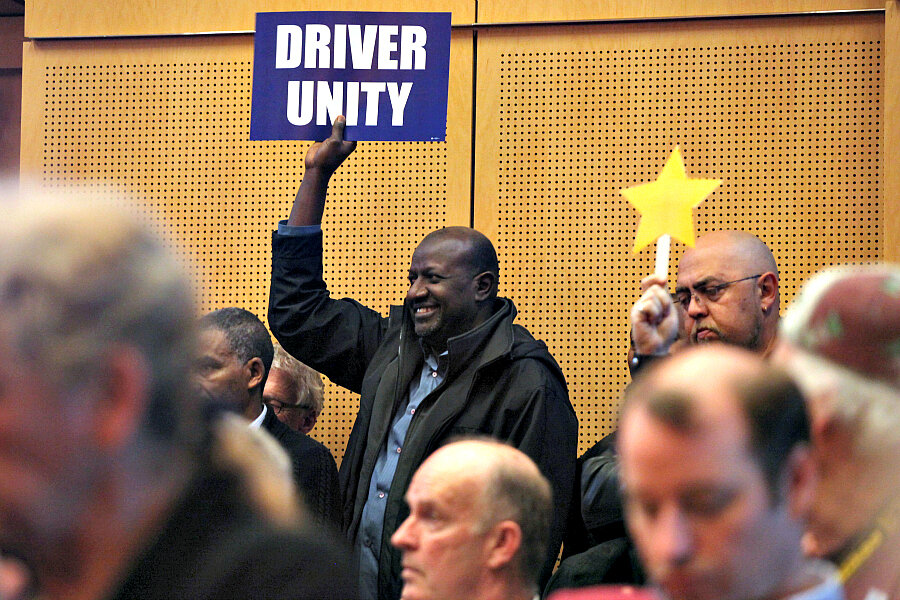The ‘gig economy'
Loading...
The Internet has brought out many people’s inner entrepreneur. Marketplaces such as eBay are changing the way goods are bought and sold.
The same is happening with services: Suddenly it’s easier than ever to earn money by running errands for total strangers, giving them a lift in your car, or renting your spare bedroom to them (or maybe your whole house or apartment).
Whether these ventures are meant as serious full-time businesses or just a way to earn a little cash part time, this “sharing economy” (also called the “peer-to-peer economy” or the “gig economy”) represents something new. More and more workers aren’t really “employees” anymore; they’re signing up with online facilitators like Lyft, TaskRabbit, and Airbnb to function more like independent “contractors” – with all the advantages and disadvantages that status confers.
A new survey just released shows how big and ubiquitous the gig economy has become. The survey found that more than 90 million Americans, 44 percent of all US adults, have either offered their services through online brokers or been a customer of someone who has. That’s more people than are registered as either Democrats or Republicans, say the poll’s sponsors, Time Inc.; Burson-Marsteller, a public relations firm; and the Aspen Institute Future of Work Initiative.
The benefits for gig economy enterprises such as Uber, the leader in ride-hailing services (now valued at $62 billion), are many. With no actual employees the cost of doing business is low.
Workers also reap considerable benefits, most notably in the form of flexible schedules: They can work as much or as little as they want, when they want.
But they don’t receive any fringe benefits, such as health insurance, vacations, sick days, or retirement plans.
They also must pay for the cost of providing their service. If they’re running errands or hauling passengers in their own cars, for example, they’ll have to pay for their own gas, insurance (perhaps at a higher commercial rate, depending on the state and insurer), and vehicle upkeep. After deducting all their expenses, some gig workers may find they’re earning minimum wage – or less.
While gig economy technology may involve applications and smartphones, the concept is as old as human society. I do a task for you at a price we’ve agreed on; you pay me.
The Industrial Revolution required armies of workers working on shared tasks on a set schedule. It led to the rise of unions to protect them from exploitation, making sure that children were not employed, for example, and that working conditions were safe and wages adequate.
Have these new “nonemployer” companies (which make a profit by taking a percentage of each worker’s earnings) found a loophole for avoiding the cost of hiring employees? Or have they created something new, a win-win in which each worker has maximum freedom to decide when, where, and how much to work?
Cities and states are now wrestling with these issues. Lawsuits are under way. Some efforts are being made to unionize these gig workers, to turn them back into employees with benefits.
The best way forward may not yet be evident. But it is time to keep a close watch on the effects of this new way of working and gather fresh data, as this helpful new survey has done. More information is needed to help form an intelligent response.





